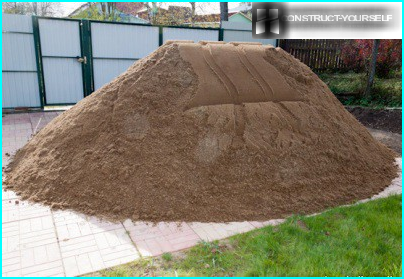
In homes in the city to have a Central water supply system is practically impossible. Usually this function assumes a well or borehole drilled by the owners. In any case, you will have to break down how to raise water from mines. With well fewer problems: scored a bucket and pulled! But with the bore so will not work. In its design, the bucket simply won’t fit. Your only option is installation of a water pump. But they differ on the principle of action. Preferably, before choosing the right pump for the well, to explore their range and characteristics, as well as the characteristics of the casing, which select the equipment. About some of the nuances, like these, today and we’ll talk.
The contents
What you need to know when choosing a pump?
There are several parameters influencing the selection of a particular model of pump for the well. And need each of them to perform as accurately as possible.
Daily water consumption
Before you start to choose the pump, it is necessary to calculate how much you spend per day of water. This will depend on the capacity of the unit and its performance. If your family is small (3-4 people), and no large gardens, you can stay on the unit, which delivers 60-70 liters per min. If the site has many flower beds and garden beds that require frequent watering, it is necessary to choose a more powerful pump.
The exact depth of the source
Studying the store pump models, please note the passport of the product. It is always indicated how deep is this model. Your task is to correlate this information with data from their wells. If you specifically don’t remember the sizes, you can do so:
- Hang on the rope or thin twine weight (preferably iron);
- To lower it into the shaft bore until you hit the bottom;
- Removed and measured the wet and dry part of the string. Wet will tell you what height of water column in well, and dry – the distance to the surface from the start of water;
- Adding these two values, we get the total size of the wells.
The speed of filling the borehole with water (debit)
Is to calculate the well flow rate is impossible, because in the spring the flow of water will be faster in winter time is slower. But you can get approximate numbers. Counting them is easy: it is necessary to ask at acquaintances or neighbors in the area acting pump and run it on your source.
What to consider:
- Note the time in which the whole vicecersa water;
- Notice how many hours the well will be filled completely;
- Divide the time No. 2 time No. 1 – so rough a debit.
The question may arise, how do you know that the well was filled completely. Elementary! Periodically lowering the same weight, which you measured the height of the pillar. As soon as the readings will match what you have received when determining the size of mine – well filled.
The diameter of the casing
If the well is planned, it is better to make it a four-inch. For structures with the same diameter of the pumps sold a lot, you can not say about a three-inch. They drill less, and therefore the equipment they produce little.
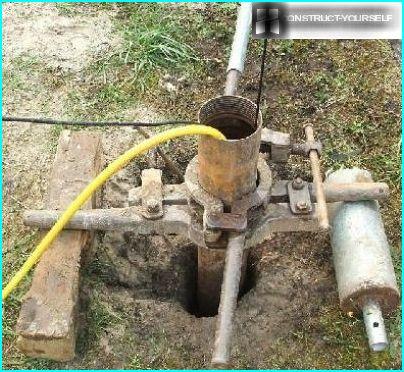
Measure the diameter of the casing can construction tape measure, and then change centimeters to inches (1 inch approximately equal to 2.54 cm)
The diameter of the finished bore is easy to measure yourself (in inches, and then translate to inches), or contact workers, Borowski you design.
The quality of a drilled well
If you drilled design themselves or not confident in the professionalism of drillers, look for pumps designed specifically for borehole. Generic units are, of course, will be cheaper, but they are less effective. The fact that non-professional or long-used sources often zabyvayutsya sand, and it would interfere with the operation of the equipment. You will have to frequently clean the pump and its service life will be reduced. If the unit was created precisely for wells, then it is a blockage in the fluid is not so terrible.
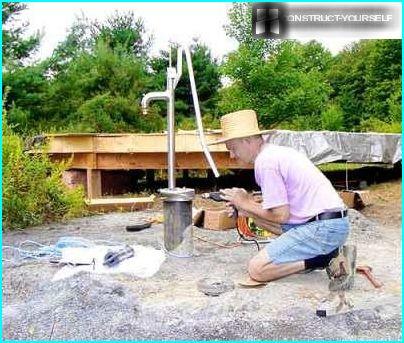
If the well was drilled by non-professionals, it may Zamyatina sand. Therefore, it is better to buy specialized pumps designed for wells, not universal
Choose a unit on working
When all of the above is analyzed, you can begin to familiarize with the types of pumps. Based on the characteristics of the work, all systems are divided into 2 groups: surface and submerged (or underlying). Consider their differences.
Surface pumps
This type of equipment mounted on the ground without sinking. The pump pumps the fluid via suction. The deeper is the water column, the harder it is to raise the liquid, the more powerful fighting skills. Surface pumps are recommended to buy for wells in which the distance to the beginning of the water column does not exceed 8 metres. Do not buy for pumping water rubber hose. It is when the art starts to compress the walls due to the thin air and does not pass water. It is better to replace it with a pipe with a small diameter. The main advantage of surface pump: easy to install, dismantle.
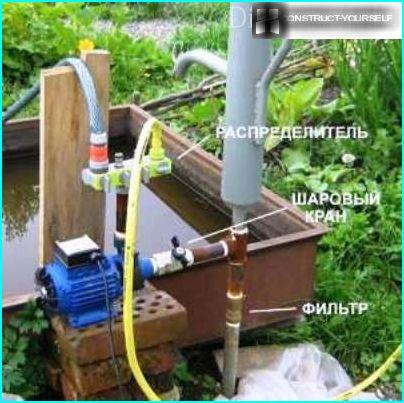
The surface pump can be installed directly near the wells, and to reduce its growl, you can make a box of wood and hide there equipment
Submersible units
If you have a deep well, the option of a surface pump will not work. Will have to search among a submersible units.
Equipment is immersed directly in a pipe in the water column. Systems work on the principle of ejection of liquid. Determine what your wells need a pump at the bore sizes. More precisely – it is necessary to calculate at what height the unit will have to push the water jet. To do this, remember the measurements that you conducted earlier. Length of dry rope with a weight is the height, which will have a pump to raise water. Add 3-4 m, because the pump is immersed for a couple of meters deeper than the beginning of the water and you will get a final figure. If it does not exceed 40 meters, so you can buy simple, low-power pumps. Look in the passport information on the maximum depth where you can work the system.
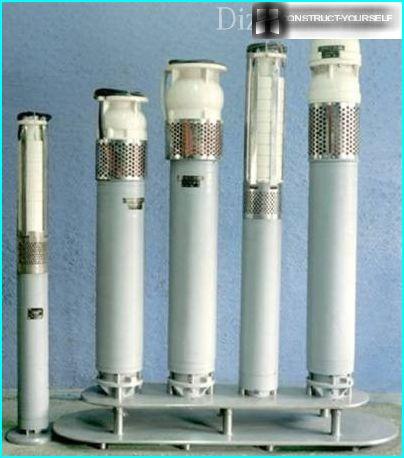
Learn more powerful submersible pumps is easy: their appearance is larger than that of the low-power «fellow», and weight they are heavier
By the way, if you estimate the height of rise of water is 60 meters, and pump this depth – the maximum, that model better not to take. Technique will work at the limit of their forces, because with every meter in depth performance decreases and workload increases. Look for pumps with a capacity of 70 meters of depth. This will help equipment to operate without too much stress and better preserved.
Tip! Take a model with automatic. If the motor overheats (from a long time of work or clogged the water) or the liquid vicecersa, the pump will turn off itself. Otherwise the motor will burn up until you discover the problem.
Two types of deep-well pumps (centrifugal and vibratory) better stop at the first. Vibration is very sensitive to dirty water, and in the process destroy the walls of the well.
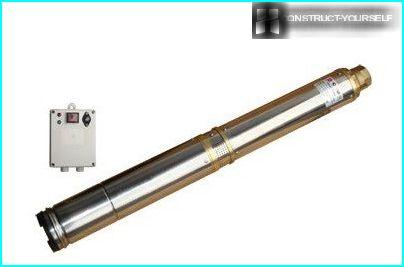
Centrifugal pump captures the water with the blades, not the oscillation of the membrane, like a vibration, so he hangs motionless and does not destroy the walls of the well
The pump is selected on for a long time, so look for models released well-known, well-established manufacturers. Then you will be easier to find a service center for repair and maintenance of your system.






